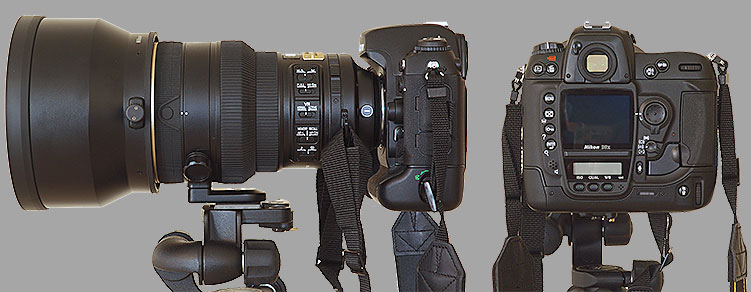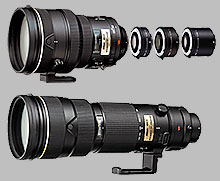 |
|
|
||||||||||||||||||||||||||||||||
|
|
|
|
|
|
|
|
|
|
||||||||||||||||||||||||||
|
|
|
|||||||||||||||||||||||||||||||||
 |
 |
 |
 |
 |
 |
 |
|
|||||||||||||||||||||||||||
|
|
 |
|
|
|||||||||||||||||||||||||||||||
 |
|
|||||||||||||||||||||||||||||||||
|
|
|
|
|
|||||||||||||||||||||||||||||||
|
|
|
|||||||||||||||||||||||||||||||||
|
|
|
|
|
|||||||||||||||||||||||||||||||
|
|
|
|||||||||||||||||||||||||||||||||
|
|
|
|
|
|||||||||||||||||||||||||||||||
| Searching for a new lens to replace the 2.8/300 on his Nikon DSLR equipped with a DX-size sensor, Ghislain Simard has tested the Nikkor AFS VR 200 mm f/2 G in the field in very difficult weather conditions. Let’s follows him in the snow with the Nikon D2x and the 200 mm at the French sled dog race championship in the Vercors’ mountains named “Alpirush”.
|
||||||||||||||||||||||||||||||||||
| February 25th, at 10 :07, I receive a phone call from my local dealer : « I have a D2x for you ! ». I will be able to work with my new high-resolution DSLR since the beginning of the spring, especially for my pictures of butterflies in flight. I spends my first week-end with the D2x practicing close-ups in the nature on Saturday and in my studio on Sunday. The Nikon D2x definitely delivers high resolution photographs and the best picture are taken, as usual, when the lighting sweets well with the subject. But, since I switched to Nikon DSLR, I have a frustration, something I miss and the D2x will not solve this problem : my 300 mm f/2.8, which was my favorite lens for sport and action photos, is no longer a 300 mm. The DX-size sensor has stolen it and replaced it by a longer lens, like a 450 mm. I can of course use my zoom 80-200 on the 200 mm position, but I do not find the dynamism and the low depth of field of my 300 mm. Last May, Nikon announced the arrival of the AFS VR 200 mm f/2 G IF-ED. I immediately thought that it was perhaps the lens I miss! Before buying such a lens, I gather information, I contact photographers who use it. Everybody report an exceptional optical quality. Last January, Nikon let me test it with my D2H then with a D2X. And I decided to buy it : the D2X and this 200 mm form a beautiful couple. I am impatient to test it in the field. Here in France, in the Vercors, the French championship of dogs sledge, named Alpirush, is organized from the March 5 to March 7, 2005. It will be a very good test of couple D2X and AFS 200 mm f/2 VR.
|
|
|||||||||||||||||||||||||||||||||
| But I did not took into account the weather. Indeed, the forecasts are very pessimistic because a snowstorm is announced for all the day of Saturday. However, I decided to take pictures of the race with two friends photographers and the motivation of the group overrides the weather difficulties. We meet ourselves on Saturday morning at “Fond d’Urle” on the starting line. It is 9:30. The snowstorm is on time. The weather is so bad I hesitate to get my new camera out of the bag. Moreover, the competitors stay inside their cars. Therefore, this is no way to take interesting photographs on the starting line. So, we move foreward in the forest and search for an interesting point of view. Now, we walk in the snow with rackets which are really essential in the very bad weather. The camera is well protected in my back bag. We find quickly an interesting place in the forest. In spite of white snow, the conditions of lighting are poor and the visibility is very reduced because of the density of the flakes. I wonder whether I will be able to use a telephoto lens in these conditions. But, I decide to take my equipment out of the bag to I mount the 200 mm on the D2X while preventing that snow enters in the camera; it is not simple! I look in the viewfinder where two pleasant surprised awaits me. First, the low depth of field at f/2 cancels partly the flakes and this will make it possible to take photographs with the telephoto lens in the storm. Then, the wide aperture compensates the poor lighting. I will be able to work with a fast shutter speed (1/1000 sec) at f/2 while remaining in 100 ISO. I set the exposure corrector to + 0.7 and I take a couple of test shots in order to check the exposure. I analyse the results by displaying the histogram and I check especially that the high light in the snow are not burned. Thus, I decide to use the NEF format in order to record all the dynamic range of the sensor for a future correction of tons and contrast in the snow and in the shadow on my computer. I choose to record Jpeg files medium resolution as well for faster editing just after the end of the race. The lens is heavy (same weight than a 300 mm f/2.8 : 2,9 kg). Therefore, I fix it on a strong monopod. Now, I am waiting for the first competitors. Quickly, my camera becomes white : the snow is everywhere. I hope that Nikon has well protection the D2x against bad weather, ice and water. When the first musher arrives, first shots give a good initial feedback. The body’s ergonomics is good, very close to my habits learned with the D2h. I have no need to use the high speed crop mode (burst of 8 frames/sec and record of 6,8 Megapixels in the centre of the sensor) because 5 frames/sec bursts are enough for such a subject. The writing throughput on the CF memory card is very high and I forget that I am recording 12 Megapixels images. The high resolution of the Nikon D2x has no impact in practice other that the limited number of files that can be stored in my CF cards : only 180 compressed NEF files can be stored in the 2 Gb card. But one thing disturbs me. I have the filling that the AF does not work smoothly and I am not confident with the setting of the AF mode on the body and on the lens. The AF of the D2x associated to the features of the AFS VR 200 mm f/2 G is so sophisticated that are a lot of parameters that can be adjusted by the photographer : Single Area AF, Dynamic AF with Focus Tracking and Lock-on, Closest Subject Priority Dynamic AF, Group Dynamic AF. During the race, I test different AF sensor grouping in Group Dynamic AF mode. Because of the flakes which fall between the dogs and the camera, images have poor contrast and the AF seems to work easier when I pre-select the AF sensor located where the subject is. But, it is impossible to check the precision of the focusing on the rear display because it is always hidden by the snow ! |

|
|||||||||||||||||||||||||||||||||
 |
||||||||||||||||||||||||||||||||||
|
During the second half of the race, we move near the finish line, at the Raphaël Poiré stadium. In the car, while cleaning my equipment, I discover that the snow has been changed into ice on the lens and on the hood ! I am really testing the AFS VR 200 mm f/2 G IF-ED under strong conditions.
|
|
|||||||||||||||||||||||||||||||||
| next page |
||||||||||||||||||||||||||||||||||



